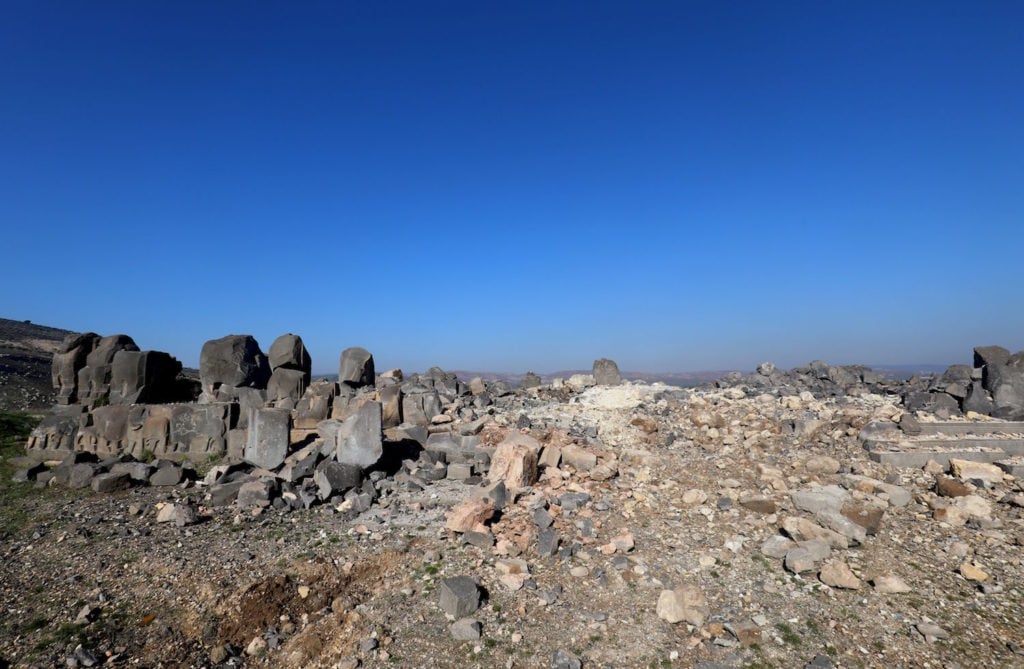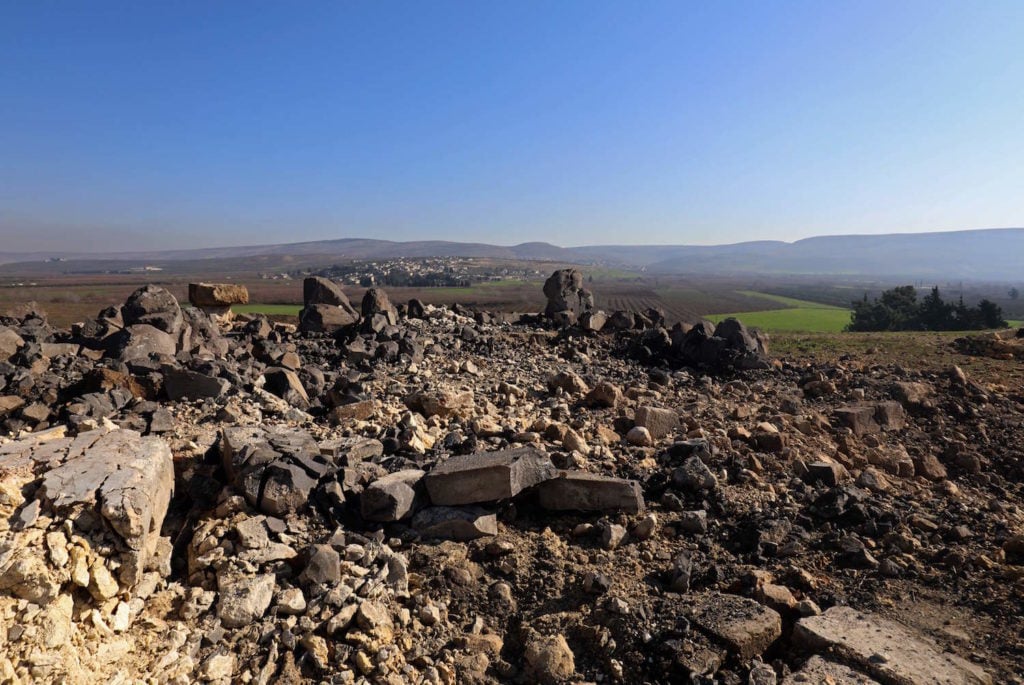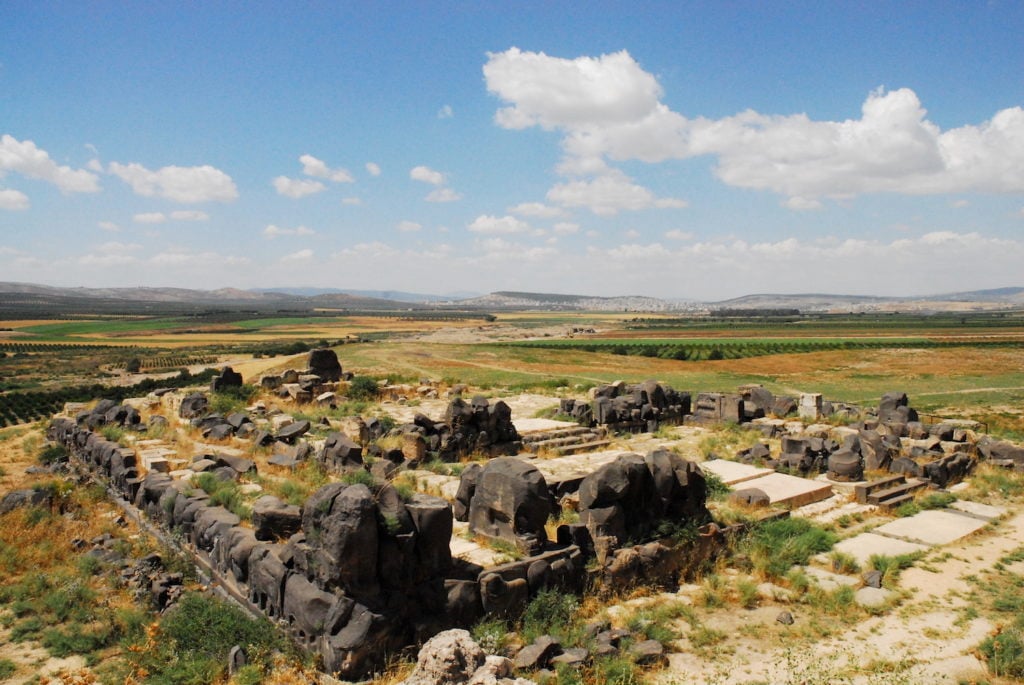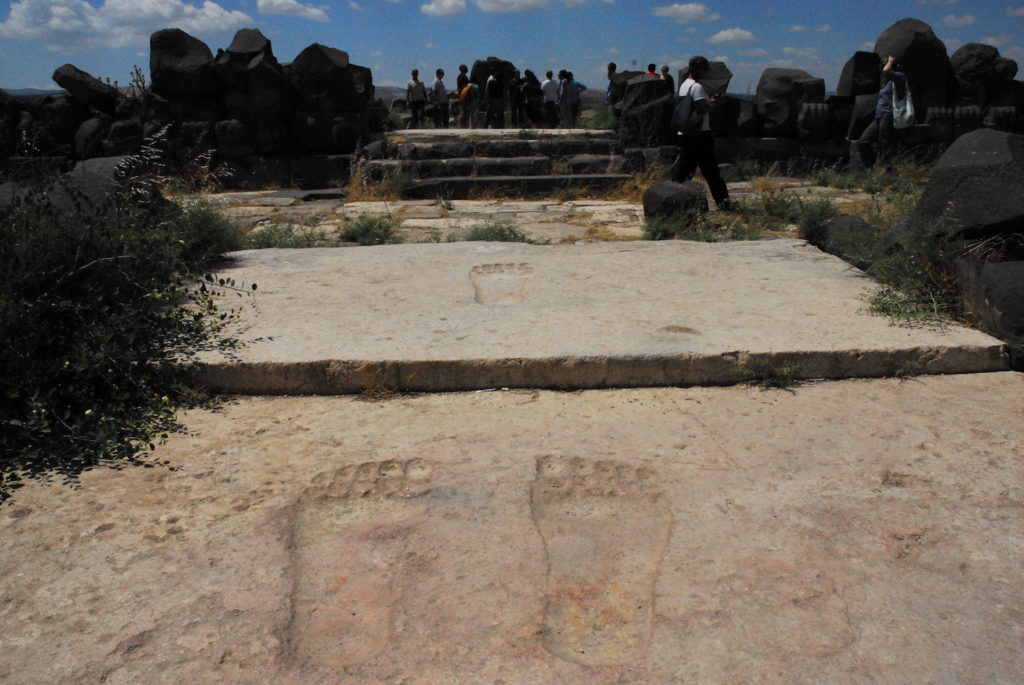Politics
Turkish Forces Nearly Destroy the Ancient Syrian Temple of Ain Dara
The devastating attack on the Iron Age complex is being compared to ISIS's destruction of the Temple of Bel in Palmyra.

The devastating attack on the Iron Age complex is being compared to ISIS's destruction of the Temple of Bel in Palmyra.

Sarah Cascone

The ancient Syrian site of Ain Dara was hit by devastating air raids carried out by Turkish forces on Friday. The attacks, aimed at the Kurdish-held city of Afrin, in northern Syria, have partially destroyed the 3,000-year-old Neo-Hittite temple complex built by the Arameans between the 10th and 8th centuries BC.
The Syrian Observatory for Human Rights posted photos of the destruction, which was confirmed by the Syrian Arab Republic Ministry of Culture, on Facebook. Since the start of the civil war in 2011, Syria has lost many of its ancient sites, with significant damage at the UNESCO World Heritage sites of Palmyra and the Old City of Aleppo, largely at the hands of ISIS.

A picture taken on January 29, 2018, shows destruction at the ancient temple of Ain Dara, some seven kilometers from Afrin after it was damaged in Turkish air strikes according to Syria’s antiquities department and the Britain-based Syrian Observatory for Human Rights. Photo courtesy of Delil Souleiman/AFP/Getty Images.
Speaking to Agence France Presse, former Syrian antiquities chief Maamoun Abdulkarim said that the attack at Ain Dara featured “the same level of atrocity” as ISIS’s destruction of the Temple of Bel in Palmyra. The air strikes could indicate an increased threat level for the region’s historic sites.
“This event marks a shift in tactics that could result in significant destruction of cultural assets over the coming months, in a region that contains a high density of heritage sites and standing ancient remains,” Michael Danti, an archaeologist at the American Schools of Oriental Research told National Geographic.

Ain Dara in 2010. Photo courtesy of Michael Danti.
“It is especially unfortunate since Turkey places great emphasis on cultural heritage preservation and protection, and yet their forces have done considerable damage during a relatively small and short offensive in northwest Syria,” he added in an email to artnet News. “We hope that more will be done to protect cultural heritage in this region given its importance to cultural identity, diversity, memory, and expression.”
The Ancient Villages of Northern Syria, near Afrin, have been included on UNESCO’s World Heritage List in Danger since 2013. “The villages, which date from the 1st to 7th centuries (CE), feature a remarkably well-preserved landscape and the architectural remains of dwellings, pagan temples, churches, cisterns, bathhouses,” notes the UNESCO website.

Lion at Ain Dara (2009). Photo by Verity Cridland via Wikimedia Commons.
Known for its intricately carved colossal basalt lion sculptures, Ain Dara bore a close resemblance to the biblical description of Solomon’s Temple, the first Jewish temple in Jerusalem. As one of the region’s few extant temples from the period, Ain Dara provided archaeologists valuable insights into what Solomon’s lost temple might have been like.
Ain Dara’s other notable features include a carved path of larger-than-life footprints leading into the temple, thought to symbolize the presence of the gods and unique in the architecture of the region.
“The damage to Ain Dara is tragic,” wrote Brian Daniels, co-director of the Safeguarding the Heritage of Syria and Iraq (SHOSI) Project and director of research and programs at the Penn Cultural Heritage Center, in an email to artnet News. “It does not strike me that there has been a particular lull in cultural destruction, only that it has been less reported, and, specifically, less ISIS-driven since the collapse of that group’s organization.”

The giant footprints at Ain Dara in 2010. Photo courtesy of Michael Danti.
He noted an air strike had hit Syria’s Ma’arra Mosaic Museum two weeks ago, and that the recent attacks were “a continuation of the kind of violence we have witnessed against people and their heritage in Syria since 2011.”
As reported by the BBC, Syria’s antiquities department denounced the Ain Dara air raid, which they claim “reflects the hatred and barbarism of the Turkish regime against the Syrian identity and against the past, present and future of the Syrian people.”